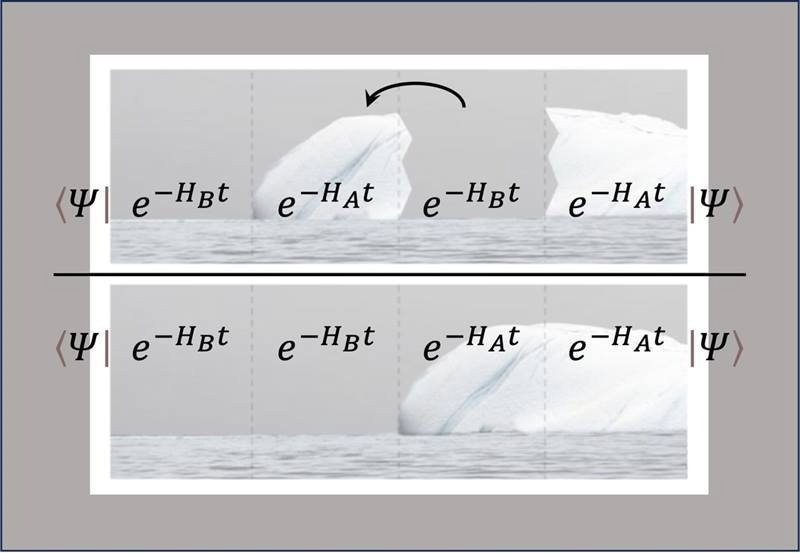Reviewed by Lexie CornerApr 9 2024
Atomic nuclei are examples of quantum many-body systems, which are made up of numerous tiny particles interacting in intricate ways. This renders it exceedingly challenging to predict the behavior of the systems as the particles interact.
 The floating block method is pictured as ice blocks and the sea. The method applies a filtering process called imaginary time evolution to two Hamiltonians, represented by ice and sea. It gives the overlap between the two Hamiltonians’ lowest energy states. Image Credit: Avik Sarkar
The floating block method is pictured as ice blocks and the sea. The method applies a filtering process called imaginary time evolution to two Hamiltonians, represented by ice and sea. It gives the overlap between the two Hamiltonians’ lowest energy states. Image Credit: Avik Sarkar
Quantum Monte Carlo simulations are computational tools researchers use to study these systems. In this work, atomic nuclei corresponding to two distinct Hamiltonians and their overlap were computed using a quantum Monte Carlo method known as the “floating block method.”
Hamiltonians serve as mathematical representations of the energy within a quantum system. Investigating Hamiltonians enables scientists to comprehend the evolution of a quantum system over time. The floating block method makes it feasible to perform previously impossible calculations for large quantum systems.
The Impact
Researchers can create quick and precise emulators for quantum systems using quantum Monte Carlo simulations and the floating block method. The method operates by calculating data for a range of distinct parameter values, or the values that characterize the quantum system.
Using these baseline data, researchers can develop an emulator that precisely forecasts outcomes for any combination of parameter values falling within a given range. Numerous applications could arise from this use of quantum Monte Carlo simulations and the floating block method. For example, it could help researchers working on quantum computing.
Summary
Using quantum Monte Carlo calculations, researchers from Forschungszentrum Jülich, the University of Bonn, and the Facility for Rare Isotope Beams at Michigan State University computed the overlap between energy states of different Hamiltonians using the floating block method. The floating block method rearranges the time blocks in a stepwise manner by using imaginary (as opposed to real-valued) time evolution for two distinct Hamiltonians to compute the overlap between energy states.
The procedure resembles a chunk of ice floating into the ocean after breaking from a larger ice mass. The floating block method's computational efficiency surpasses other methods by orders of magnitude, and its advantage increases with system size.
Funding
The Chinese Academy of Sciences, Volkswagen Stiftung, the National Science Foundation, the European Research Council, the Department of Energy's SciDAC-5 NUCLEI Collaboration, and MKW NRW provided support for this work. The Oak Ridge Leadership Computing Facility, the Gauss Centre for Supercomputing e.V., and Michigan State University's Institute for Cyber-Enabled Research contributed computational resources.
Journal Reference:
Sarkar, A., et al. (2023) Floating Block Method for Quantum Monte Carlo Simulations. Physical Review Letters. doi.org/10.1103/PhysRevLett.131.242503